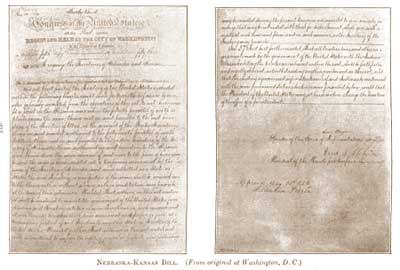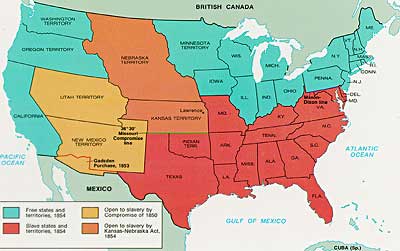31a. The Kansas-Nebraska Act

Stephen Douglas, the sponsor of the Kansas-Nebraska Act as well as the most vocal supporter of popular sovereignty, was known as the "Little Giant" because of his small stature.
The Kansas-Nebraska Act of 1854 may have been the single most significant event leading to the Civil War. By the early 1850s settlers and entrepreneurs wanted to move into the area now known as Nebraska. However, until the area was organized as a territory, settlers would not move there because they could not legally hold a claim on the land. The southern states' representatives in Congress were in no hurry to permit a Nebraska territory because the land lay north of the 36°30' parallel — where slavery had been outlawed by the Missouri Compromise of 1820. Just when things between the north and south were in an uneasy balance, Kansas and Nebraska opened fresh wounds.
The person behind the Kansas-Nebraska Act was Senator Stephen A. Douglas of Illinois.

The Kansas-Nebraska Act began a chain of events in the Kansas Territory that foreshadowed the Civil War.
He said he wanted to see Nebraska made into a territory and, to win southern support, proposed a southern state inclined to support slavery. It was Kansas. Underlying it all was his desire to build a transcontinental railroad to go through Chicago. The Kansas-Nebraska Act allowed each territory to decide the issue of slavery on the basis of popular sovereignty. Kansas with slavery would violate the Missouri Compromise, which had kept the Union from falling apart for the last thirty-four years. The long-standing compromise would have to be repealed. Opposition was intense, but ultimately the bill passed in May of 1854. Territory north of the sacred 36°30' line was now open to popular sovereignty. The North was outraged.

The Kansas-Nebraska act made it possible for the Kansas and Nebraska territories (shown in orange) to open to slavery. The Missouri Compromise had prevented this from happening since 1820.






